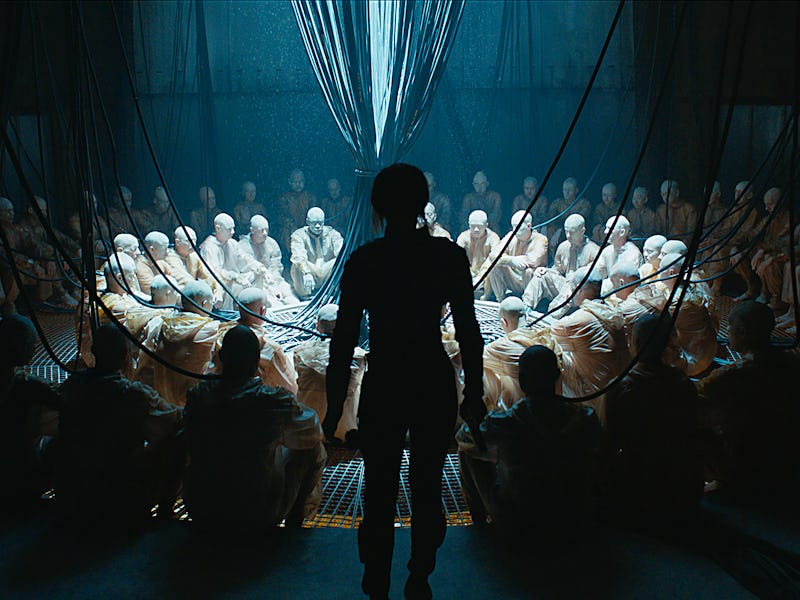'Ghost in the Shell' Is a Nightmare About Software Updates
How the 2017 reboot is hollowed out of the original film's message.

About 40 minutes into Ghost in the Shell, the tough-as-titanium Major Mira Killian (Scarlett Johansson) hangs high in the air with plugs forced in her neck. Her eyes droop as she’s forced to listen to her target — a criminal known as “Kuze” (Michael Pitt). Shrouded in a raggedy cloak, Kuze says he’s an earlier model from Hanka Robotics who was replaced by the superior and less temperamental Mira. This is what screenwriters Jamie Moss, William Wheeler, and Ehren Krueger took from Masamune Shirow’s original manga: that the real horror in artificial intelligence is that older models will one day realize they’re being replaced.
The inevitable American adaptation of Mamoru Oshii’s groundbreaking movie was already plagued with criticism when it cast Johansson as the film’s lead. It was the latest episode in an American studio choosing not to cast an Asian or Asian-American performer in a leading role written for one, all in pursuit of a guaranteed box office win. The movie tanked, and its problems ran deep.
Although visually arresting, what leaves Ghost in the Shell a hollow film is its failure to explore and expand on the theoretical exercise of the ‘95 original. In the anime version, Major Motoko Kusanagi squares off against a cyber-terrorist known as the Puppet Master, a rogue artificial intelligence program which grows self-aware and demands political asylum. The internet was just dawning when Ghost in the Shell was adapted into an anime, and the story’s values clearly reflect the fear of the unknown.
The Puppet Master was a distant yet inevitable and compelling enemy to confront back then. In the future, viewers asked themselves, what will it mean to be human?
The Major (Scarlett Johansson) and Kuze (Michael Pitt) in 'Ghost in the Shell' (2017).
Cybernetics and transferrable A.I. are both interesting Buddhist allegories used within the cyberpunk genre. That tradition was carried on later by the Wachowskis in The Matrix.
The Rupert Sanders reboot uses none of these original hypotheses, but it still posits some new ideas. Instead of a rogue A.I., Kuze — who was harvested from a runaway hideout in the “Lawless Zone” with Motoko — is a malfunctioning cyborg who wants Mira/Motoko to remember their shared past. This turns Ghost in the Shell into a character drama rather than a conceptual exploration of consciousness. One character is compelled to find the truth behind false memories.
Unlike incremental software upgrades, the 2017 model of Ghost in the Shell does nothing to supplant the significance of the 1995 version, just as it never replaced the ‘80s manga series it was based upon. And there are merits to Sanders’s live-action Ghost in the Shell — for one, the cinematography is gorgeous. But the soul of what made Motoko Kusanagi’s saga unique has been woefully hollowed out in favor of something flashier.
Ghost in the Shell is currently in theaters.